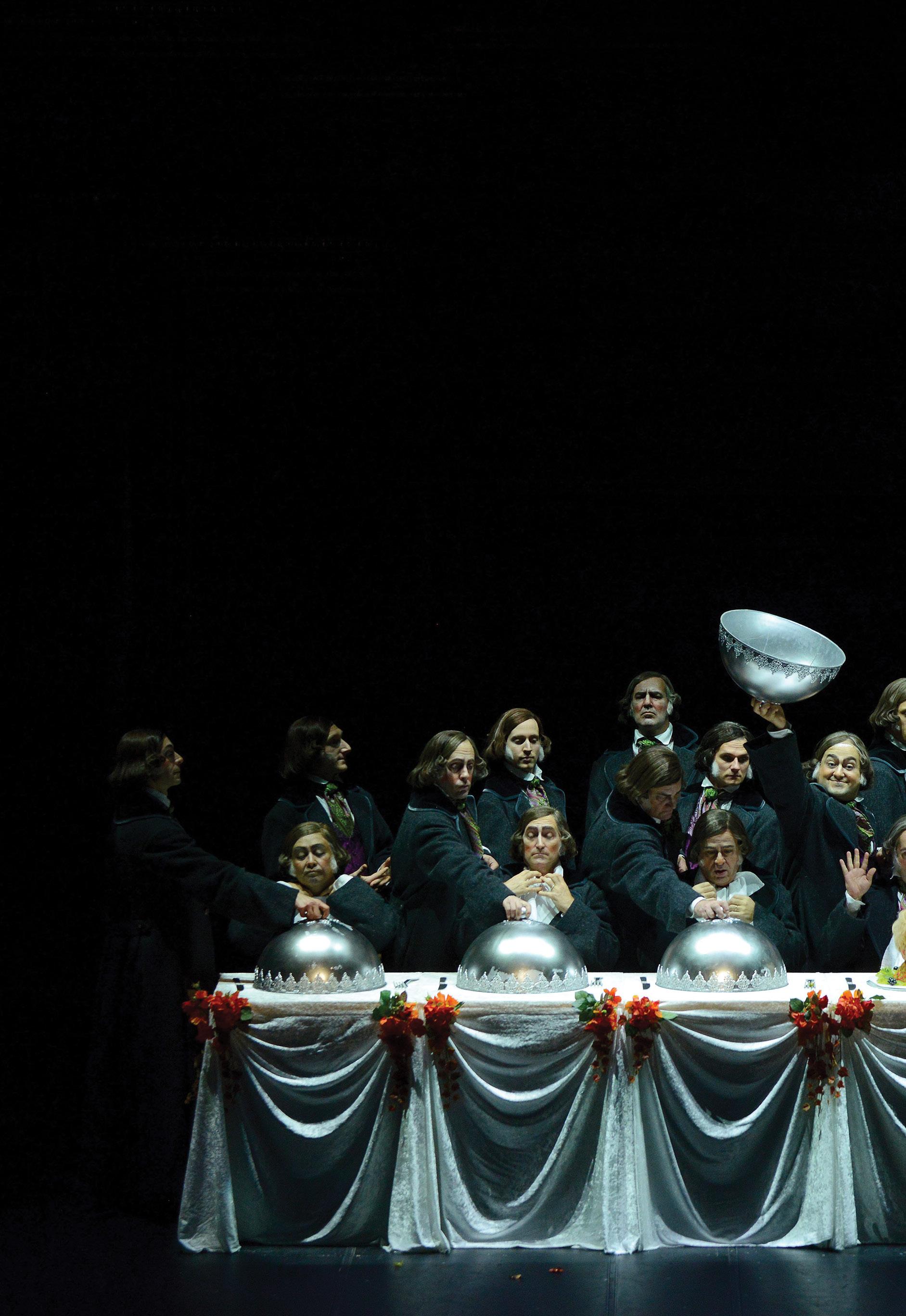
2 minute read
OPERA’S NEW OVERTURES
L.A. Opera forges unconventional pandemic-era connections with audiences “beyond our wildest imaginations.”
BY SHERRY STERN
ITALIAN AUDIENCES watched the first performances of Donizetti’s Roberto Devereux on the heels of a cholera outbreak in 1837. L.A. Opera audiences watched the final performances of Roberto Devereux on the cusp of the coronavirus outbreak of 2020.
Donizetti’s opera eventually found its way, and L.A. Opera is doing the same, cultivating the relationship between artists and audiences with renewed musical and social purpose.
Days after the Dorothy Chandler Pavilion stage went dark, the company launched its LAO at Home streaming channel with family programming, videos of past productions and live-at-home Living Room Recitals.
“Our L.A. Opera at Home program has been incredibly successful beyond our wildest imaginations,” says Christopher Koelsch,
L.A. Opera president and CEO. “The Living Room Recitals ... get the highest viewership.” The online programming draws people worldwide; average viewership is more than 10,000.
Social activism is built into L.A. Opera programming—and it carries over to LAO at Home.
When Koelsch invited mezzo-soprano J’Nai Bridges to perform a Living Room Recital, she suggested instead a discussion about racial disparities in opera. Five other African-American opera singers participated in “Lift Every Voice,” and 60,000 have watched.
Koelsch has set his sights on more ambitious alternative programming. “What I really want to experiment with is [whether] in a post COVID world we can create work native to a digital platform, a whole new sub-genre of operatic expression,” Koelsch says.
On Nov. 14, L.A. Opera and music director James Conlon present a socially distanced live stream performance of the 18thcentury chamber opera The Anonymous Lover at Colburn School’s Zipper Hall. It’s the only surviving work of composer Joseph Bologne, Chevalier de Saint-Georges, the son of an African slave and a French plantation owner.
The ticketed production will be shot with robotically controlled cameras. Bruce Lemon Jr. of the Watts Village and Cornerstone Theater Company directs.
Music by living composers such as Du Yun, Gabriela Lena Frank and Tamar-kali is coming via Digital Shorts, which pairs composers and artists to create commissioned works. There may be small live events on the Music Center Plaza.
When it’s safe, L.A. Opera will move back into the Dorothy Chandler Pavilion. Don Giovanni could begin Jan. 30. This fall’s planned Il Trovatore, Tannhäuser and Cinderella move a year later, to 2021.
Until then, the focus is on what can be done now.
“The opera company doesn’t exist to perpetuate itself,” Koelsch says. “It exists to forge the connection between artists and audience. The real test is, how do we maintain that connection?”
The Living Room Recitals and “Lift Every Voice” offer encouraging answers.











